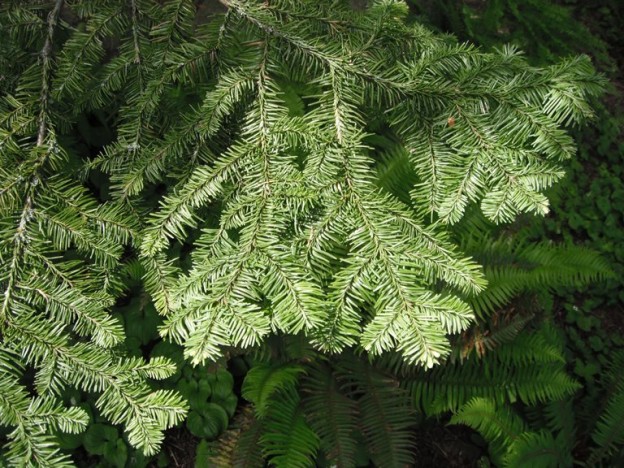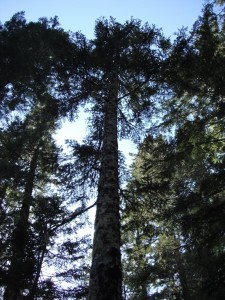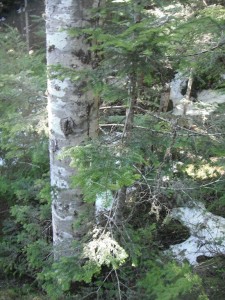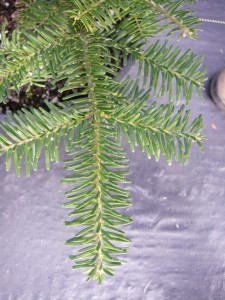Pacific Silver Fir The Pine Family–Pinaceae
Abies amabilis (Douglas ex Louden) Douglas ex Forbes
(AY-beez uh-MAA-bill-is)
Names : Pacific Silver Fir is also called “Lovely Fir.” In fact, the name “amabilis” means pretty or beautiful. It is also sometimes called Cascade or Red Fir.
Relationships: There are about 40 species of true firs in the world, 9 in North America. We have 4 in our region but only the Grand Fir, Abies grandis, is common in lower elevations..
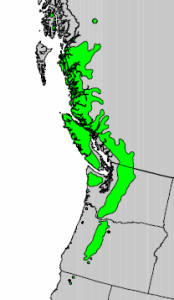
Distribution of Pacific Silver Fir from USGS ( “Atlas of United States Trees” by Elbert L. Little, Jr. )
Distribution: Pacific Silver Fir is found from the coast of British Columbia and in the mountains of Washington and Oregon.
Growth: The tallest are just over 200 feet (60m), but most only grow to about 150’ (45m). The largest are mostly found in Olympic National Park and Vancouver Island. Pacific Silver Fir lives about 400 years.
Habitat: Pacific Silver Fir is our most shade tolerant tree and is the climax species of the Pacific Silver Fir Ecological Zone, which lies between the Western Hemlock Zone and the Mountain Hemlock Zone. It grows in cool, moist rainforests and is sensitive to drought.
Wetland designation: FACU, Facultative upland, it usually occurs in non-wetlands.
Diagnostic Characters: Like Grand Fir, Pacific Silver Fir has needles that spread horizontally from the sides, but they have shorter needles on the top that point forward and lie flat against the twig. This gives each twig an appearance similar to hairs growing on a dog’s tail. (It can only be “petted” one way!”
In the Landscape: Lovely Fir is not as easy to grow in cultivation, but is worth a try in a suitable habitat!
Phenology: Bloom Period: Mid-May to mid-June. Cones mature in August; seed dispersal begins in mid-September.
Propagation: Seeds should be placed in cold moist stratification for 28 days. Germination occurs best at 30°C Day/20°C Night, alternating temperature cycle. Germination is greater in dark than in light.
 Use by People: These trees are not highly valued for lumber, perhaps because the wood is not as resistant to decay and the tree’s relative inaccessibility at higher elevations.
Use by People: These trees are not highly valued for lumber, perhaps because the wood is not as resistant to decay and the tree’s relative inaccessibility at higher elevations.
Use by Wildlife: Firs are useful to many animals for cover and nesting sites. Grouse eat the needles. Deer and elk eat the foliage and twigs in the winter. Birds, chipmunks and squirrels eat the seeds.
Links:
Consortium of Pacific Northwest Herbaria
WTU Herbarium Image Collection, Plants of Washington, Burke Museum
E-Flora BC, Electronic Atlas of the Flora of British Columbia
Jepson Manual, University of California
Ladybird Johnson Wildflower Center
USDA Forest Service-Fire Effects Information System
Native Plants Network, Propagation Protocol Database
Native American Ethnobotany, University of Michigan, Dearborn

